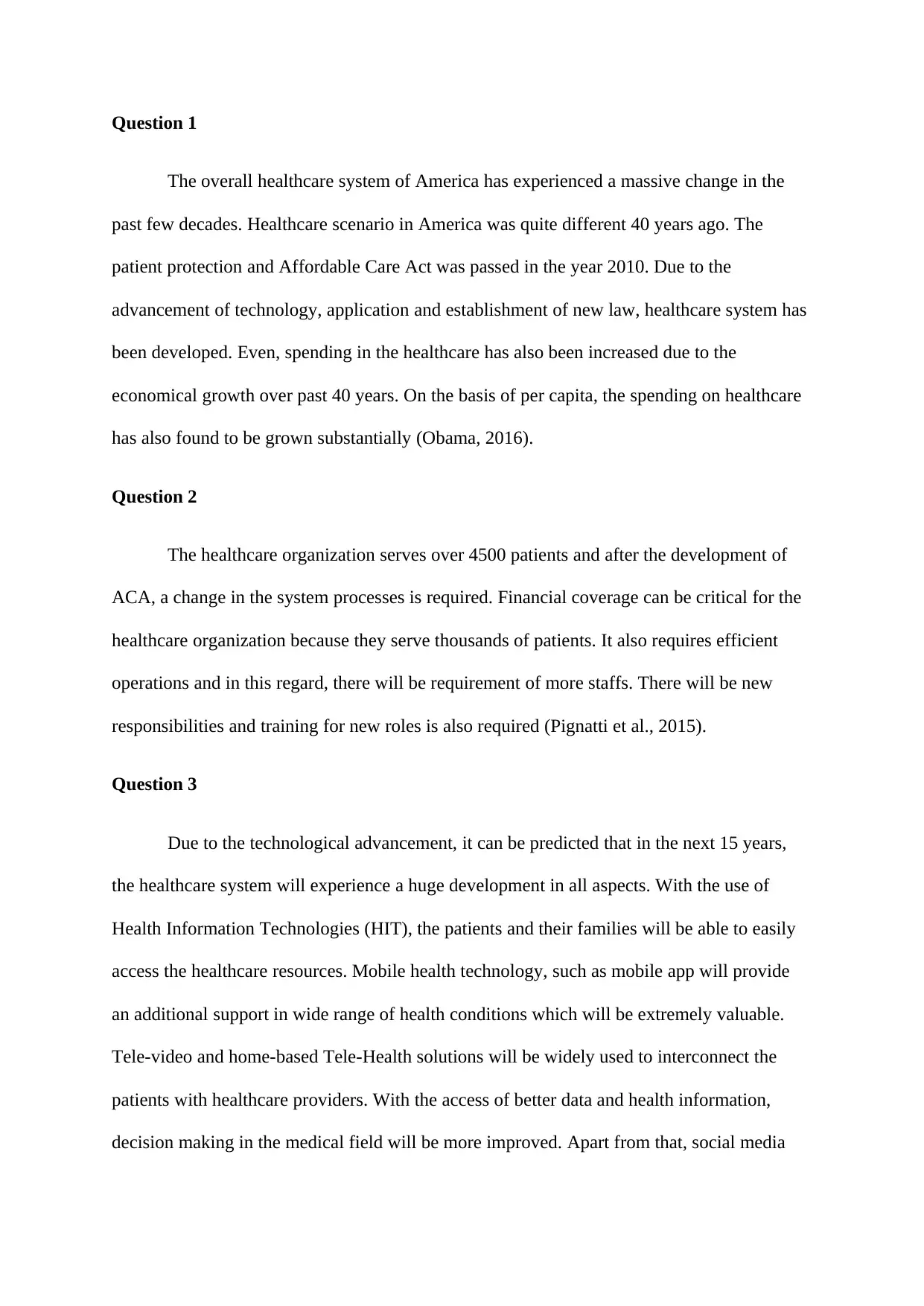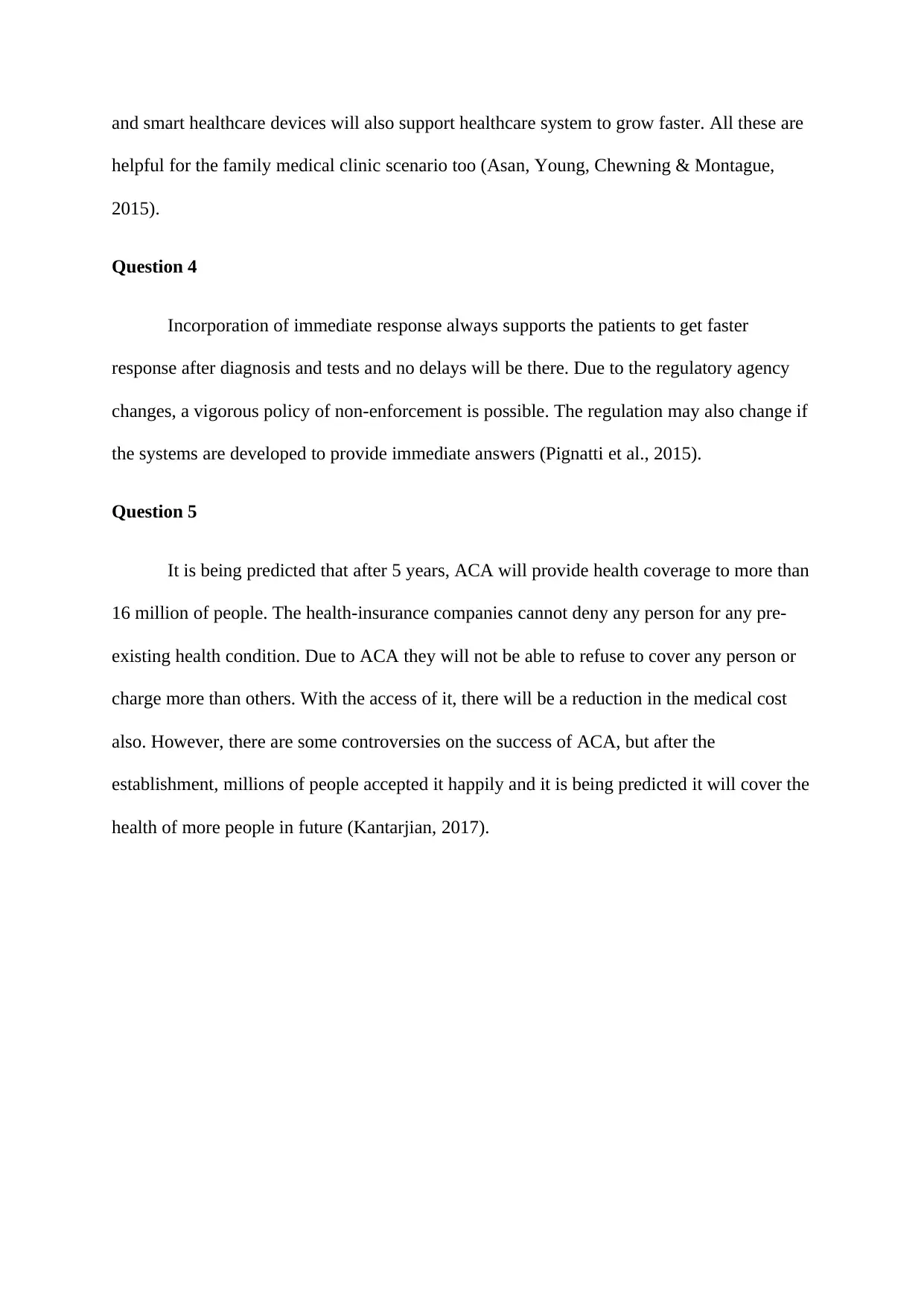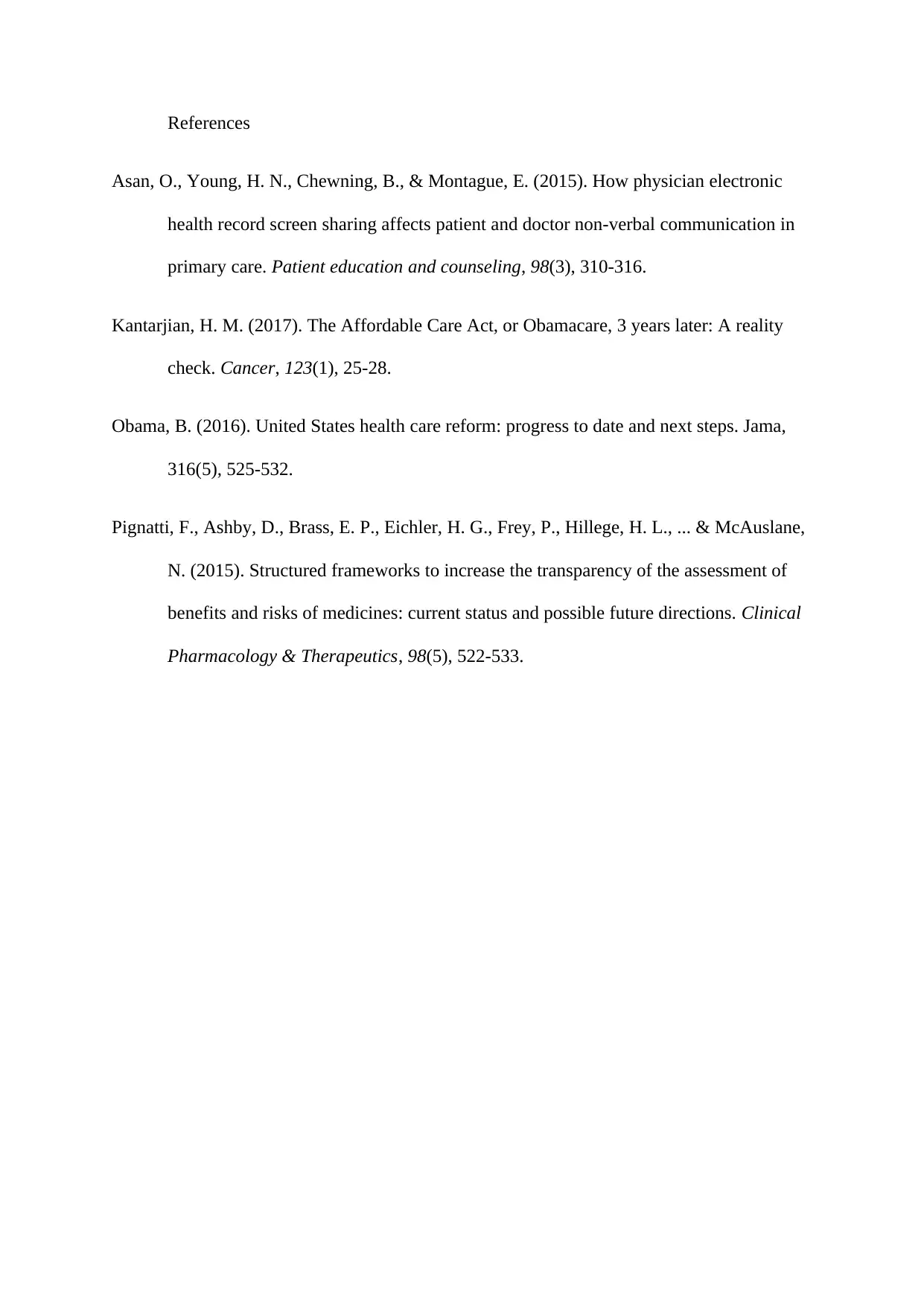Healthcare System Analysis: Impact of ACA and Future Healthcare Trends
VerifiedAdded on 2023/06/04
|3
|716
|402
Report
AI Summary
This report provides an overview of the significant changes in the American healthcare system over the past few decades, particularly after the passage of the Affordable Care Act (ACA) in 2010. It examines the impact of technological advancements, economic growth, and policy changes on healthcare spending and patient care. The report analyzes how healthcare organizations, like the one serving over 4500 patients, have adapted to the ACA, including the need for process changes, staff training, and financial coverage. It predicts future developments, such as increased use of Health Information Technologies (HIT), mobile health apps, and telemedicine, and how these technologies will improve patient access and decision-making in medical fields. The report also considers the implications of regulatory changes and the ongoing impact of ACA on health coverage, cost reduction, and controversies surrounding its success. References to supporting research are included.
1 out of 3









![[object Object]](/_next/static/media/star-bottom.7253800d.svg)